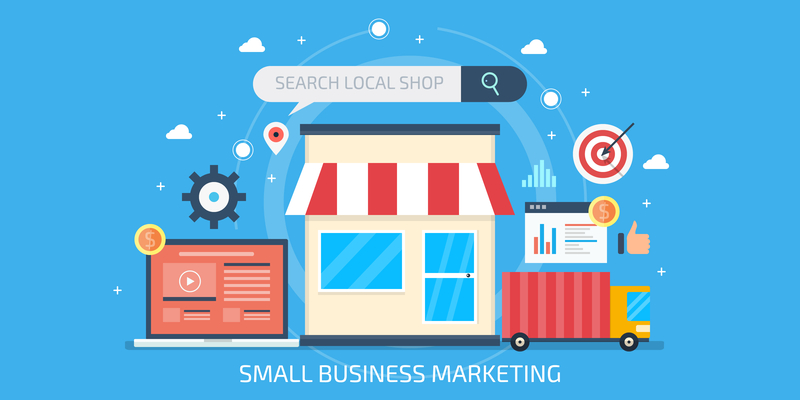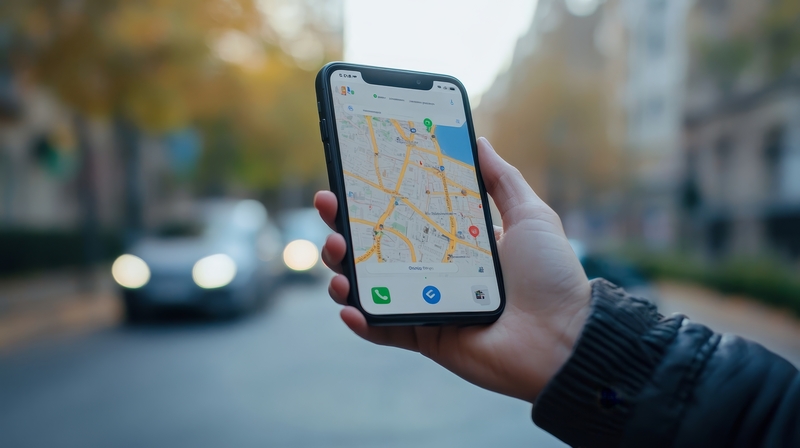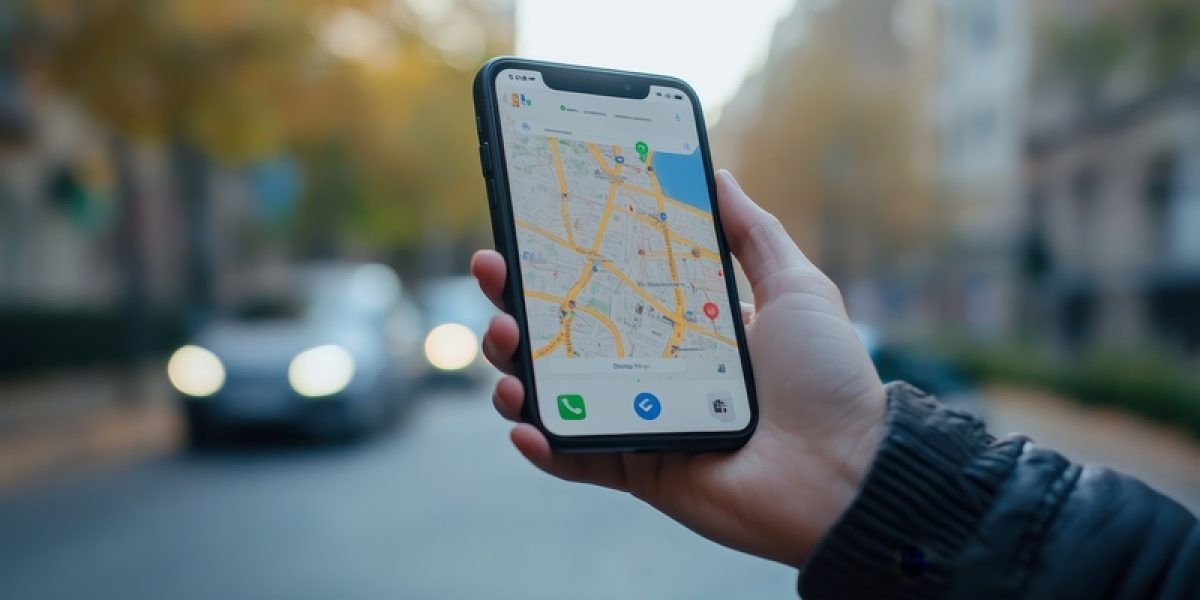When 76% of people who search for something “near me” visit a business within 24 hours, you’d think getting found locally would be every business owner’s top priority. Yet countless small businesses remain invisible to potential customers searching for their exact services just blocks away. This disconnect between customer intent and business visibility represents one of the most frustrating challenges facing local businesses today.
The numbers tell a compelling story. Since 2015, searches featuring “near me” have exploded by 900%, fundamentally changing how consumers discover local services. Whether someone needs a restaurant for dinner, an emergency plumber, or a dentist for their child, they’re turning to their phones with immediate purchase intent. These aren’t casual browsers—28% of local searches result in a purchase, making local search traffic some of the most valuable leads any business can attract.
So why do so many businesses struggle with this near me dilemma? For many business owners, the process of getting found by local customers can be complicated, with confusing steps and requirements that are easy to overlook. The answer lies in understanding that local search operates by different rules than traditional SEO. Success requires mastering Google’s complex local algorithm, optimizing for proximity-based signals, and creating a consistent digital presence across dozens of platforms. This comprehensive guide will walk you through the simple steps needed to transform your business from invisible to inevitable when local customers search for what you offer.

Understanding the Local Search Challenge
The local search ecosystem operates like a sophisticated matching system, connecting users with the most relevant businesses based on location, intent, and authority. When someone searches for “coffee shop near me” or “best dentist in Phoenix,” Google’s algorithm instantly evaluates hundreds of signals to determine which businesses deserve the coveted spots in the local pack—those three prominent listings that appear with the map.
To clarify the meaning of ‘local pack’: it refers to the group of three highlighted business listings that appear at the top of local search results, typically accompanied by a map, helping users quickly find relevant businesses in their area.
This local pack represents prime real estate in search results. Studies show that the top three local listings receive the majority of clicks, while businesses that don’t make the cut often become invisible to potential customers. The challenge intensifies when you consider that over 60% of these searches happen on mobile devices, where screen space is limited and users expect immediate, accurate results.
Many businesses make critical mistakes that sabotage their local visibility. The most common error involves inconsistent business information across online platforms. When your business name appears as “Joe’s Restaurant” on Google but “Joe’s Family Restaurant” on Yelp and “Joseph’s Restaurant” on Facebook, search engines struggle to understand that these represent the same business. This confusion directly impacts your ability to rank for local searches.
Another frequent mistake involves treating local SEO like traditional website optimization. While both share some fundamentals, local search prioritizes different ranking factors. Proximity to the searcher, consistency of business information, and local citation strength often matter more than traditional metrics like domain authority or keyword density. Businesses that focus solely on general SEO tactics miss the specialized strategies that drive local search success.
The mobile optimization gap represents perhaps the most critical oversight. When a user searches for “urgent care near me” from their phone, they need immediate access to your address, phone number, and hours. A website that loads slowly or displays poorly on mobile devices effectively eliminates your business from consideration, regardless of how well you might rank on desktop searches.
The Local Search Ecosystem: How Google Decides Who Gets Found
Google’s local search algorithm operates on three fundamental pillars that determine which businesses get found by local customers. Understanding these factors provides the foundation for any successful local search strategy.
Proximity forms the first pillar, measuring how close your business sits to the searcher’s location. This seems straightforward, but the algorithm considers multiple location signals. For users who include a specific city in their search, Google weighs that geographic modifier heavily. For searches without explicit location terms, the algorithm relies on the user’s IP address, GPS data, and previous search history to infer intent.
Relevance represents the second crucial factor, evaluating how well your business profile matches the searcher’s query. This goes beyond simple keyword matching to analyze your business category, services offered, and the content of your Google Business Profile. A restaurant categorized correctly as “Italian Restaurant” will have better relevance signals for “Italian food near me” than one listed generically as “Restaurant.”
Prominence rounds out the trilogy, measuring your business’s overall authority and reputation online. This factor weighs your review quantity and quality, the strength of your local citations, your website’s domain authority, and your general online visibility. Prominence explains why established businesses often outrank newer competitors even when proximity and relevance factors are similar. By consistently improving their authority and reputation, businesses can advance in local search rankings and gain a competitive edge.
The Google Business Profile serves as the central hub for these signals. Research indicates that Google Business Profile information appears in 93% of local searches, making it the single most important asset for local visibility. This profile aggregates your business information, customer reviews, photos, and posts into a comprehensive listing that Google uses to evaluate your worthiness for local search results.
Google’s algorithm also distinguishes between different types of local intent. Searches with clear commercial intent (“buy flowers near me”) receive different treatment than informational queries (“flower care tips”). The system recognizes service area businesses differently from brick-and-mortar locations, and it adapts results based on the searcher’s historical behavior and current context.

Setting Up Your Google Business Profile for Maximum Visibility
Your Google Business Profile represents your most valuable digital asset for local search success. This free tool from Google serves as your business’s primary entry point for local customers, appearing in maps, search results, and providing critical information that influences customer decisions.
The setup process begins with claiming your business listing. Many businesses already have a profile created automatically by Google’s data collection systems. Search for your business name and location on Google to determine if a listing exists. If you find one, click “Claim this business” to begin the verification process. If no listing exists, visit the Google Business Profile website and select “Add your business to Google.” To claim or manage your business profile, you will need to log into your Google account.
Verification proves to Google that you’re the legitimate owner of the business. Most businesses receive verification through mail, where Google sends a postcard with a verification code to your business address. This process typically takes 1-2 weeks, though some businesses qualify for instant verification through phone or email. Service area businesses without a physical storefront can verify through phone verification in many cases.
Once verified, completing your profile becomes crucial for visibility. The business name field must match exactly how your company appears on your website and other official documents. Inconsistencies here create confusion for both users and search engines. Your address should include the complete street address, city, state, and ZIP code, formatted consistently with postal standards.
Business categories significantly impact your search visibility. Google allows one primary category and up to nine additional categories. Choose your primary category carefully—it directly influences which searches trigger your business listing. A bakery should select “Bakery” as the primary category rather than the more generic “Restaurant.” Secondary categories expand your reach for related searches. That same bakery might add “Wedding Cake Shop,” “Custom Cake Designer,” or “Coffee Shop” to capture additional search traffic.
The business description provides an opportunity to naturally incorporate local keywords while explaining your services. Keep descriptions under 750 characters and focus on what makes your business unique. Include your city name and service area naturally within the description. For example: “Family-owned Italian restaurant serving authentic pasta and pizza in downtown Phoenix for over 20 years. We offer dine-in, takeout, and catering throughout the Phoenix metro area.”
Essential Business Information Components
NAP consistency forms the backbone of local SEO success. NAP stands for Name, Address, and Phone number—the three pieces of information that must remain identical across every online platform where your business appears. This consistency signals to search engines that your business is legitimate and trustworthy. Maintaining accurate business information also supports efficient business operations and builds customer trust by ensuring smooth communication and reliable service.
Start by establishing your canonical NAP format. If your business name is “Phoenix Auto Repair LLC,” use that exact format everywhere. Don’t abbreviate to “Phoenix Auto Repair” on some platforms and “PAR LLC” on others. The same principle applies to your address. If your official address uses “Street,” don’t alternate between “St.” and “Street” across different platforms.
Phone numbers require particular attention for businesses with multiple locations. Each location needs its own unique phone number that forwards to the appropriate location. Avoid using central call centers or shared numbers, as this dilutes the local signals that Google uses for ranking. Local phone numbers (with area codes matching your service area) typically perform better than toll-free numbers for local search purposes.
Business hours deserve careful attention beyond the basic open and closed times. Include holiday hours, special event schedules, and temporary hour changes. Google penalizes businesses that provide inaccurate hours information, particularly when customers attempt to visit during posted hours only to find the business closed. Use the special hours feature to account for holidays, staff training days, or other closures.
Service area businesses face unique challenges in defining their coverage area. Instead of listing a physical address, these businesses should define the geographic regions they serve. Be specific about coverage areas while avoiding overly broad claims. A plumbing company might serve “Phoenix, Scottsdale, Tempe, and surrounding areas within 25 miles” rather than claiming to serve “all of Arizona.”
For multi-location businesses, each location requires its own Google Business Profile with unique NAP information. Create location-specific landing pages on your website for each business address. These pages should include location-specific content, staff information, local testimonials, and driving directions. This approach helps Google understand that you operate multiple legitimate locations rather than trying to game the system.

Local Keyword Research and Implementation Strategy
Effective local keyword research differs significantly from traditional SEO keyword analysis. Local keywords combine service terms with geographic modifiers, creating longer phrases that indicate strong purchase intent. Someone searching for “emergency plumber Phoenix” demonstrates much higher conversion potential than someone searching for general “plumbing tips.”
Begin your research by identifying your core services and the geographic areas you serve. A dental practice might offer “teeth cleaning,” “dental implants,” “emergency dental care,” and “cosmetic dentistry.” Each service can be combined with your city name, surrounding cities, and neighborhood-specific terms. This creates a comprehensive list of target phrases like “teeth cleaning Scottsdale,” “dental implants Phoenix,” and “emergency dentist downtown Phoenix.” Using the right tools can help streamline the local keyword research process, making it faster and more efficient to generate and organize these keyword combinations.
Google Keyword Planner provides valuable data on local search volume, but supplement this tool with Google Trends to understand seasonal patterns and growing search terms. Local searches often follow predictable patterns—tax preparation services peak in early spring, HVAC repair spikes during extreme weather, and wedding services increase during engagement season.
Long-tail keywords deserve special attention in local search. Phrases like “24-hour emergency veterinarian near downtown Phoenix” face less competition than generic terms while attracting customers with immediate needs. These specific searches often convert at higher rates because they indicate clear, urgent intent.
Track your keyword performance using tools that provide location-specific ranking data. Your business might rank well for local searches from within your city but poorly for searches from surrounding areas. This granular data helps you understand your true local visibility and identify opportunities for expansion.
The “near me” phenomenon requires special consideration in your keyword strategy. While you can’t directly optimize for “near me” searches, you can optimize for the underlying intent. Create content that addresses local customer needs without stuffing “near me” into your copy. Google recognizes the intent behind these searches and matches them with relevant local businesses.
Content Optimization for Local Search
Location-specific content forms the foundation of successful local search optimization. Each geographic area you serve should have dedicated content that speaks to the unique needs, characteristics, and interests of that community. This approach helps search engines understand your relevance to specific locations while providing value to local customers.
Create neighborhood or city-specific landing pages for your primary service areas. These pages should go beyond basic NAP information to include local landmarks, community involvement, area-specific testimonials, and region-specific service considerations. A landscaping company serving multiple Phoenix suburbs might create separate pages discussing desert landscaping challenges in Scottsdale versus water conservation requirements in Tempe.
Your Google Business Profile posts provide an ongoing opportunity to reinforce local relevance. These posts appear in your business listing and can include local keywords, community events, and area-specific offers. Post regularly about local events your business sponsors, community involvement, seasonal considerations affecting your services, and location-specific promotions.
Develop a local FAQ section addressing questions specific to your geographic area. Include information about local regulations, climate considerations, area-specific services, and community-related topics. A real estate agent might answer questions about Phoenix school districts, local zoning laws, or neighborhood-specific market trends.
Local event content provides excellent opportunities for fresh, relevant content creation. Cover community events your business sponsors or participates in, seasonal activities that affect your services, and local news that impacts your customers. This content demonstrates community involvement while providing natural opportunities to mention local keywords and areas you serve.
Customer testimonials and case studies gain additional power when they include location-specific details. Instead of generic reviews, encourage customers to mention the specific location where they received service, local landmarks near your business, or community-specific aspects of their experience. These location-rich testimonials provide both social proof and local search signals.
Building Local Citations and Online Authority
Local citations represent mentions of your business’s NAP information across the web, forming a crucial component of local search authority. These citations act like votes of confidence, telling search engines that your business is legitimate, established, and worthy of local search visibility.
Major citation platforms provide the foundation of your citation strategy. Start with the most important directories: Google Business Profile, Bing Places, Apple Maps, Facebook Business, Yelp, and Yellow Pages. Many citation databases and business directories focus on the USA, making them especially important for businesses targeting American customers. These platforms carry significant weight in local search algorithms and often appear in search results themselves.
Industry-specific citations offer opportunities to build authority within your professional niche. Medical practices should be listed in health-focused directories, restaurants should appear on dining platforms, and professional services should maintain profiles on relevant industry associations. These niche citations carry additional weight because they demonstrate specialization and expertise.
Citation accuracy requires ongoing maintenance and monitoring. Use tools to regularly audit your citations across hundreds of platforms, identifying inconsistencies that need correction. Even small discrepancies—like “St.” versus “Street” or outdated phone numbers—can dilute your local search authority.
The quality of citation sources matters more than quantity alone. A citation from your local chamber of commerce carries more weight than listings on low-quality directories. Focus on building citations from reputable, relevant sources rather than pursuing every possible listing opportunity.
Local link building amplifies your citation strategy by creating connections with other local businesses and organizations. Partner with complementary businesses for cross-promotion, sponsor local events for link opportunities, and engage with community organizations that might link to local business members.
Community involvement provides natural opportunities for high-quality local links. Volunteer with local charities, sponsor youth sports teams, participate in chamber of commerce events, and support community initiatives. These activities often result in links from respected local organizations while demonstrating your commitment to the community.

Review Management and Customer Engagement
Customer reviews directly influence both local search rankings and customer decision-making processes. Google’s algorithm considers review quantity, recency, diversity, and overall rating when determining local search positions. More importantly, 93% of consumers read online reviews before choosing a local business, making review management essential for customer acquisition.
Encouraging positive reviews requires a systematic approach integrated into your customer service process. Train your sales team and staff to request reviews at optimal moments—after successful service completion, during follow-up communications, or when customers express satisfaction. Make the process simple by providing direct links to your Google Business Profile review section.
Review response strategy affects both SEO and customer perception. Respond to all reviews, both positive and negative, within 24-48 hours when possible. Positive review responses should be brief but personalized, thanking customers by name and mentioning specific services when appropriate. These responses provide opportunities to naturally include local keywords and business information. Additionally, providing clear answers to common customer questions in your review responses or FAQ section can enhance customer engagement and support local SEO.
Negative review responses require careful handling to demonstrate professionalism and customer service commitment. Address concerns directly, offer to resolve issues offline, and maintain a helpful tone. These public responses show potential customers how you handle problems, often building more trust than businesses with only positive reviews.
Review response templates ensure consistency while saving time. Create template frameworks that can be customized for specific situations. Include placeholders for customer names, specific services, and issue details. This approach maintains personalization while streamlining the response process.
Monitor reviews across multiple platforms beyond Google. Yelp, Facebook, industry-specific sites, and even Better Business Bureau profiles can impact your online reputation. Set up alerts to notify you immediately when new reviews appear, allowing for timely responses.
Encourage detailed, location-specific reviews that include local keywords naturally. Guide satisfied customers to mention the specific location where they received service, local landmarks near your business, or community-specific aspects of their experience. These rich, local reviews provide additional SEO value while helping future customers understand your local presence.

Converting Local Search Traffic into Customers
Your Google Business Profile serves as a crucial conversion tool beyond simple visibility. High-quality photos showcasing your products, services, location, and team help potential customers visualize their experience with your business. Include interior and exterior shots, staff photos, product images, and behind-the-scenes content that builds trust and familiarity.
Virtual tours provide an immersive way for customers to explore your business before visiting. This feature particularly benefits restaurants, retail stores, medical offices, and other businesses where atmosphere and layout influence customer decisions. Virtual tours increase engagement time and build confidence in customers who prefer to preview locations before visiting.
Strong calls-to-action in your business description and posts drive immediate customer action. Include phrases like “Call now for same-day service,” “Book your appointment online,” or “Visit us today for a free consultation.” Make these CTAs specific and urgent when appropriate for your industry.
Google Business Profile messaging enables direct communication with potential customers. Enable this feature and respond promptly to inquiries. Many customers use messaging to ask quick questions about hours, services, or availability. Fast responses can convert browsers into customers while demonstrating excellent customer service.
Appointment booking integration streamlines the customer acquisition process for service-based businesses. Connect your scheduling system to your Google Business Profile so customers can book directly from search results. This convenience factor often determines whether a customer chooses your business over competitors.
Track conversion metrics to understand how local search translates into business results. Use Google Analytics to monitor traffic from local searches, implement call tracking to measure phone inquiries from your listing, and monitor direction requests as a proxy for foot traffic. This data helps you measure the effectiveness of your local search efforts and identify opportunities for improvement.
Tip: Set up conversion tracking in Google Analytics and regularly review your Google Business Profile Insights to identify which keywords and actions drive the most customer engagement. This helps you optimize your profile and website for better results.
Advanced Local SEO Tactics for Competitive Markets
Schema markup provides structured data that helps search engines understand your business information more precisely. LocalBusiness schema includes details like operating hours, address, phone number, price range, and accepted payment methods. This markup enhances your chances of appearing in rich results and improves the accuracy of your business information in search results. Setting a clear course for advanced local SEO tactics can help businesses stay ahead in competitive markets by guiding their optimization efforts along a proven path.
Neighborhood-specific content strategies help businesses dominate hyperlocal searches. Create content addressing the specific needs, events, and characteristics of individual neighborhoods within your service area. A home security company might create separate content for different neighborhoods discussing area-specific crime statistics, local police response times, and community safety initiatives.
Local link building requires creativity and community engagement. Partner with local news outlets for expert commentary on industry topics, sponsor local events for link opportunities, and collaborate with complementary businesses for cross-promotional content. These local links carry additional weight in local search algorithms.
Google Analytics and Search Console configuration for local businesses requires attention to location-specific goals and tracking. Set up location-based goal tracking, monitor local landing page performance, and analyze search query data for location-specific opportunities. This analysis reveals which areas provide the best opportunities for expansion and which locations need additional optimization focus.
Competitor analysis in local search involves understanding not just your direct business competitors, but also which businesses currently rank for your target local keywords. Use tools to identify the businesses appearing in local packs for your key terms, analyze their Google Business Profiles, and understand their citation and review strategies.
Multi-location businesses face unique challenges requiring sophisticated strategies. Each location needs its own landing page, Google Business Profile, and citation profile. Avoid duplicate content across location pages by creating unique content addressing each area’s specific characteristics, customer base, and service considerations.

Common Local Search Mistakes That Kill Visibility
Keyword stuffing in business names represents one of the fastest ways to get penalized by Google. Business names like “Best Phoenix Plumber | Emergency Plumbing | 24 Hour Service” violate Google’s guidelines and can result in suspension or removal from local search results. Keep business names accurate and natural, matching your legal business name and signage. The role businesses play in maintaining accurate and compliant business names is crucial for local search success.
Inconsistent business information across platforms creates confusion for both search engines and customers. When your address appears differently on your website versus your Google Business Profile versus Yelp, search engines struggle to verify your legitimacy. Audit all online presences regularly to ensure NAP consistency across every platform.
Mobile optimization failures particularly damage local businesses since over 60% of local searches happen on mobile devices. Ensure your website loads quickly on mobile, contact information is easily accessible, and location details are prominently displayed. Mobile users often have immediate needs, so friction in the mobile experience directly impacts conversion rates.
Fake reviews and black hat tactics might provide short-term gains but result in severe long-term penalties. Google’s sophisticated algorithms detect fake reviews, review exchanges, and other manipulative practices. These violations can result in complete removal from local search results, making it virtually impossible to recover your local visibility.
Neglecting Google Business Profile maintenance allows competitors to gain advantages through consistent optimization. Regular posting, photo updates, and information accuracy demonstrate to Google that your business is active and engaged. Dormant profiles often see declining visibility as more active competitors take their place in local results.
Ignoring negative reviews or responding defensively damages both search rankings and customer perception. Every negative review represents an opportunity to demonstrate customer service excellence and problem-resolution skills. Professional, helpful responses often build more trust than businesses with only positive reviews.
Measuring Success and Ongoing Optimization
Local search success requires tracking metrics that directly relate to business goals rather than vanity metrics. Focus on tracking local pack rankings for your most important keywords, monitoring click-through rates from Google Business Profile to your website, and measuring phone calls generated from your local listings.
Google Business Profile insights provide valuable data about customer behavior and search performance. Track how customers find your business (direct searches vs. discovery searches), which photos generate the most views, and what actions customers take after viewing your profile. Analyze which words or keywords are most effective in driving local search traffic and customer actions. This data helps you optimize your profile for maximum engagement and conversion.
Conversion tracking setup enables measurement of local search ROI. Implement phone call tracking to understand which local search terms generate phone inquiries, set up form tracking for online leads, and monitor in-store visits through location-based analytics. This data proves the value of your local search investment.
Monthly audit checklists ensure consistent optimization and prevent ranking declines. Review NAP consistency across major platforms, monitor new citations and correct any inaccuracies, analyze competitor activities and new market entrants, and update business information for any changes in hours, services, or contact details.
Competitive monitoring helps identify opportunities and threats in your local market. Track which businesses appear in local packs for your target keywords, monitor competitor review generation and response strategies, and analyze new businesses entering your market that might impact your visibility.
Long-term success in local search requires adapting to algorithm changes and evolving user behavior. Stay informed about Google’s local search updates, test new features as they become available, and continuously refine your strategy based on performance data and market changes.
The investment in local search optimization pays dividends through increased visibility, higher-quality leads, and improved customer acquisition efficiency. Businesses that commit to comprehensive local search strategies often see significant improvements in local pack rankings within 3-6 months, with continued growth as their citation and review profiles strengthen over time.
Professional local SEO services may be valuable for businesses in highly competitive markets or those lacking the time and expertise to manage complex optimization campaigns. The technical complexity of local search, combined with the need for ongoing maintenance and monitoring, often justifies professional management for businesses serious about dominating their local markets.
Local search represents one of the most cost-effective marketing strategies available to businesses with physical locations or defined service areas. The combination of high-intent traffic, immediate conversion potential, and relatively lower competition compared to national SEO makes local search optimization an essential component of any comprehensive marketing strategy.
Success in solving the near me dilemma requires commitment to providing accurate information, delivering excellent customer experiences, and maintaining consistent optimization efforts. Businesses that embrace this systematic approach to local search optimization position themselves to capture the growing wave of location-based searches that drive immediate customer action and sustainable business growth.
Understanding Local Customers
For small businesses aiming to attract more customers, understanding the local audience is the foundation of success. Every business, whether a restaurant, retail shop, or service provider, needs to know who their customers are, what they want, and how they search for products or services. This insight comes from analyzing data collected from your website, Google Search Console, Google Analytics, and even social media platforms.
By tracking how local users interact with your website—such as which pages they visit, what keywords they use in search, and where they’re located—you can create marketing campaigns that speak directly to their needs. For instance, a restaurant can use Google Analytics to discover that most website visitors are searching for “family-friendly dining in [city],” then create targeted ads or special offers to attract more families from the local area.
Understanding local customers also means paying attention to reviews and feedback, which provide valuable data about what your community values most. By combining these insights, businesses can refine their services, adjust their messaging, and ultimately drive more customers through their doors. The businesses that take the time to analyze and act on local customer data are the ones that see real results in both foot traffic and new business.

Personalizing the Business for Local Appeal
Standing out in your city means more than just being listed online—it’s about creating a business presence that feels uniquely local and inviting to new customers. One of the most effective ways to do this is by optimizing your Google Business Profile to highlight what makes your business special. Add high-quality photos of your team, your space, and your products or services. Share posts about local events, community involvement, or special offers that are relevant to your area.
Encourage customers to leave detailed reviews that mention your city or neighborhood, and respond to those reviews to show you value local feedback. This not only boosts your visibility in search results but also helps your business stand out as a trusted part of the community.
On your website, use location-based keywords—like “best coffee shop in [city]” or “top-rated plumber near [city center]”—to attract customers searching for services in your area. For example, a bakery could create a page dedicated to “wedding cakes in [city],” making it easier for engaged couples nearby to find and choose their services.
By personalizing your business for local appeal, you increase your chances of being discovered by new customers, generate more leads, and build a loyal customer base that sees your business as a go-to in the community.
Lead Generation Strategies for Local Businesses
Lead generation is the engine that drives growth for local businesses. To consistently attract new leads, businesses need to combine creativity with the right tools and tactics. Start by creating valuable content that addresses the needs and interests of your local audience—think blog posts, how-to guides, or local resource lists that position your business as an expert in your field.
Offering something for free, such as a consultation, assessment, or downloadable resource, can be a powerful way to capture leads. For instance, a local accountant might offer a free tax planning session to website visitors who fill out a simple form, turning interested users into qualified leads.
Leverage tools like Google Ads and Facebook Ads to target specific demographics and interests within your city or neighborhood. These platforms allow you to create highly targeted campaigns that reach the right people at the right time, increasing the likelihood of generating high-quality leads.
Don’t forget to use your website as a lead generation hub. Make it easy for visitors to contact you, request a quote, or sign up for your newsletter. By combining valuable content, free offers, and targeted advertising, local businesses can generate more leads, convert more customers, and grow their business efficiently.
Local Search Tools: Choosing and Using the Right Solutions
Choosing the right local search tools can be a game changer for businesses looking to boost their online visibility and attract more customers. Google My Business (now known as Google Business Profile) is a must-have tool, allowing businesses to manage how they appear across Google Search and Maps. With this tool, you can update your business information, respond to customer reviews, add photos, and post updates—all of which help keep your profile accurate and up to date.
Google Search Console is another essential tool, providing insights into how customers are finding your website and which search terms are driving the most traffic. By analyzing this data, businesses can identify which keywords are most effective and adjust their website content to improve rankings and attract more leads.
For example, if Google Search Console shows that “emergency plumbing in [city]” is a top search term, a plumbing business can create a dedicated page on their website for that service, increasing their chances of appearing in relevant searches. Regularly monitoring and responding to reviews through these tools also helps build trust and credibility with potential customers.
By leveraging the right local search tools, businesses can gain valuable insights, improve their online visibility, and generate more leads and sales—all while ensuring their information is accurate and up to date for users searching in their area.

